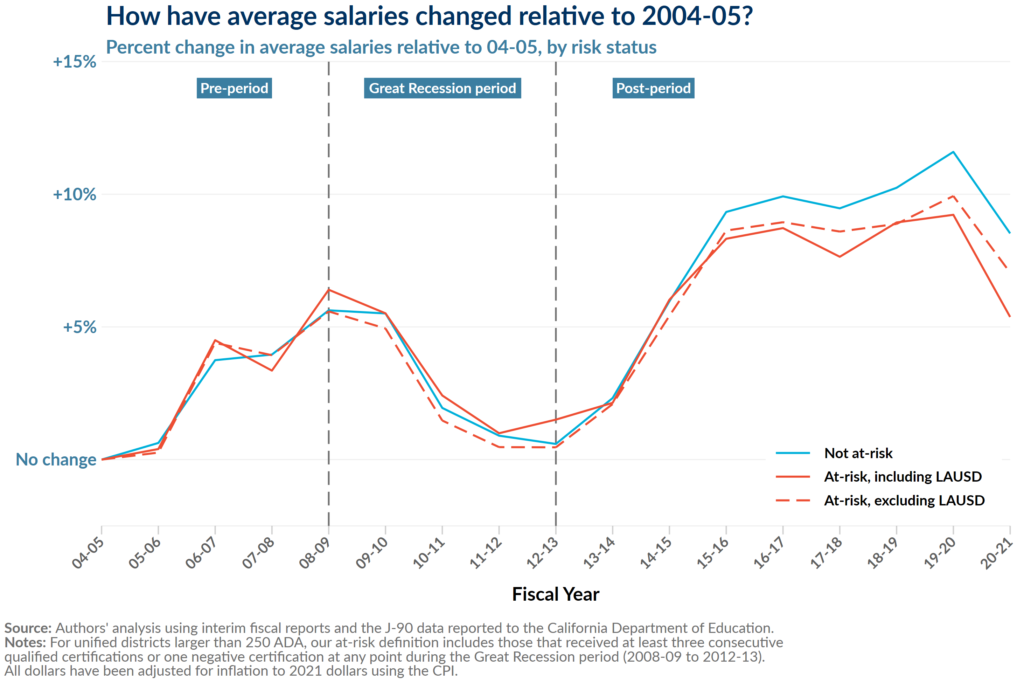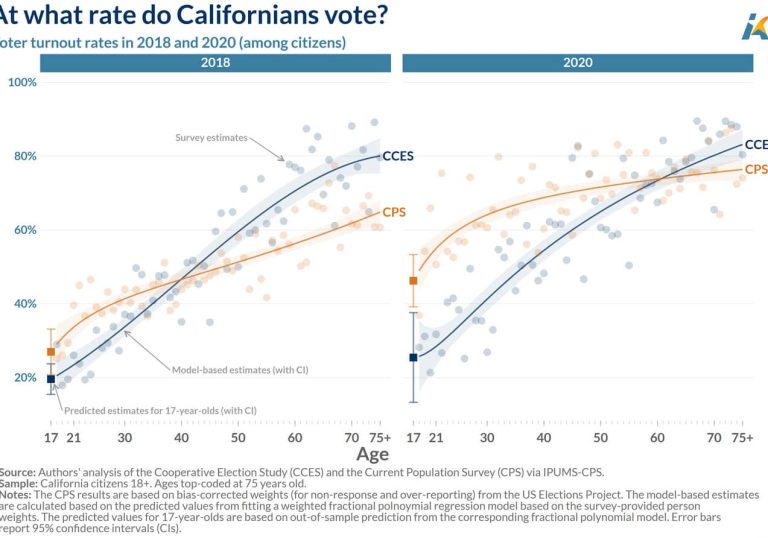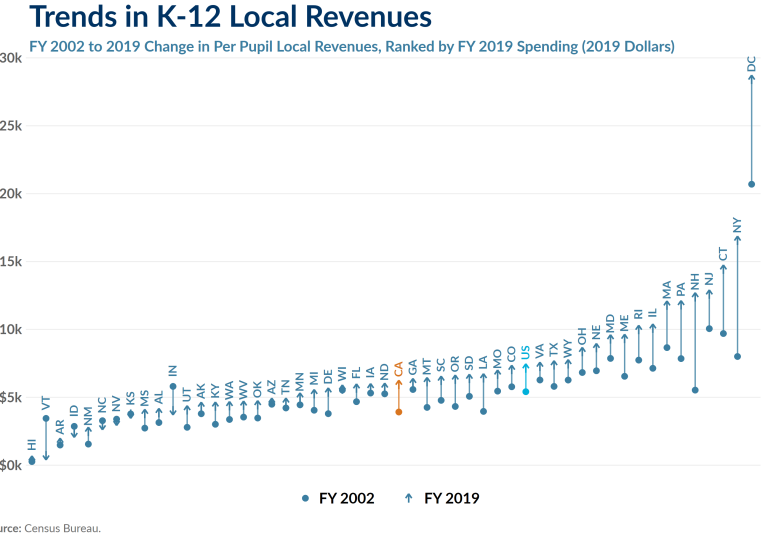California school districts are in a moment of uncertainty. While the state budget has been on solid footing for the last several years, the latest financial outlook from the Legislative Analyst’s Office predicts a $24 billion deficit in the upcoming year. In the short-term, the state may be able to cover projected budget deficits for K-12 schools with reserves, but should the state enter a recession, the picture may be decidedly more grim.
Given the prospect of another economic downturn, what might this mean for teachers (and teacher salaries) in unified school districts across the state? In the figure below, we consider what happened to salary growth during the last major recession in the state; the figure highlights changes in real certificated salaries relative to 2004-05 (including teachers, nurses, librarians, and counselors) for two groups of school districts – those that remained in good financial health during the Great Recession, and those that became “at-risk” of financial insolvency.

We find that:
- Both the at-risk cohort and the comparison group generally had similar pay raises and cuts over time until the post-period when the not-at-risk group outpaces the at-risk cohort in pay raises.
- During the Great Recession period, both the not-at-risk and at-risk districts (excluding LAUSD) experienced several years of downward changes in the salary schedule, and by 2012-13, average salaries were nearly what they were in 2004-05.
- In the post-period, salaries began to increase in 2013-14 and in 2019-20, salaries reached a high point when they increased about 12% for the not-at-risk group and about 10% for the at-risk cohort (excluding LAUSD) relative to 2004-05.
- Notably, since the recession period, the salary increases for at-risk districts have slightly lagged behind the not-at-risk group.










